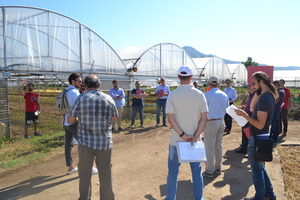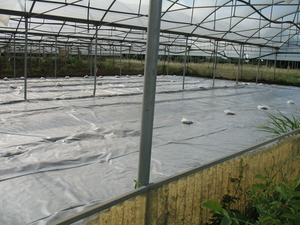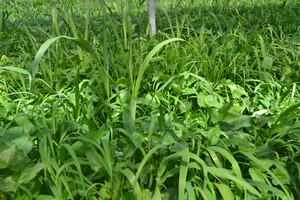Experimental site in italy




Context and objectives
Organic greenhouse production in Southern Italy is often very intensive, characterized by short rotation, wide use of soil solarization and copper-based fungicides. Even if they are compliant with all aspects of the European Regulation on organic production, intensive organic systems may have a strong environmental footprint which can affect consumer trust of organic farming and their related willingness to pay for organic products.
The experimental site in Italy aims to demonstrate that an agroecological approach to greenhouse production is technically feasible and enables the establishment of resilient agroecosystems.
Compared production systems
At the Italian experimental site, located in Capua (CE), Southern Italy, at “La Colombaia” farm, three different production systems are compared:
- Business As Usual (BAU system). It replicates typical organic production systems in protected condition in the Region and is based on a short rotation, annual soil solarization and on an input-substitution approach;
- Biodynamic INNovative system (INN 1). It is based on a long rotation, the use of biodynamic preparations, the incorporation of biodynamic compost into the soil and the cultivation of a mixture of 6 species as green manure crops;
- Agroecological INNovative system (INN 2). It is based on a long rotation, the use of a compost made with the organic portion of municipal solid waste (MSW) and the cultivation of a mixture of 2-3 species as green manure crops.
The INN systems are alternative to BAU and rely on the re-design of the cropping system with longer and more diversified crop rotations, introduction of agroecological service crops (ASC) for green manure, and the use of organic amendments.
System Approach
The experiment follows a system approach for evaluation: the three systems are compared, as a whole, in terms of:
- production levels (total and marketable);
- soil fertility (organic matter content, nutrient dynamics);
- pest and disease management (weeds, pest and disease impact and presence);
- environmental sustainability indicators (system biodiversity and ecological services, nitrate leaching risk).
Expected outputs
The hypotheses to be verified are that, compared to BAU, INN systems will result in:
- similar marketable production,
- more synchronous nutrient availability relative to the plant needs and lower nitrate leaching risk;
- higher soil organic matter content;
- lower pest and disease impact;
- higher microbial and nematode biodiversity.
The experimental activities are carried out with a multidisciplinary methodology and multi-stakeholder involvement including consumers, with the main objective of increasing awareness towards food consumption (food citizenship).
Further information
Contact
Luigi Morra, luigi.morra@crea.gov.it, CREA-CI, Caserta
 tap and then scroll down to the Add to Home Screen command.
tap and then scroll down to the Add to Home Screen command.